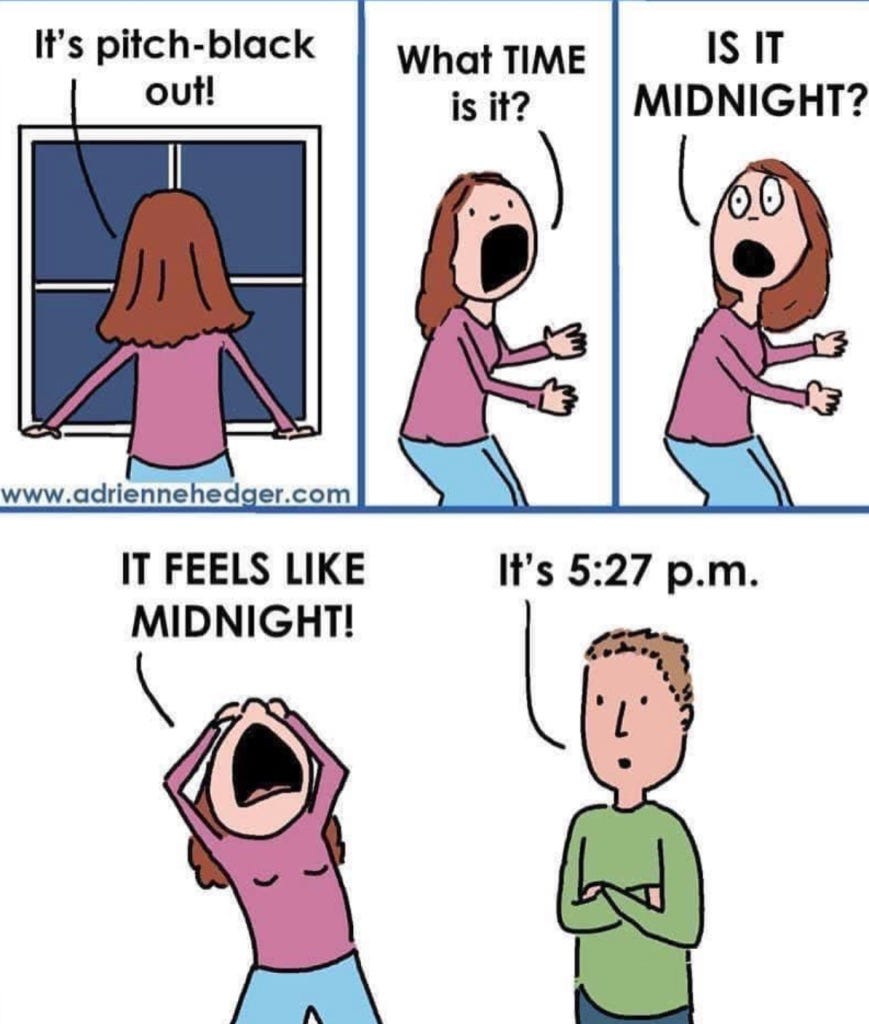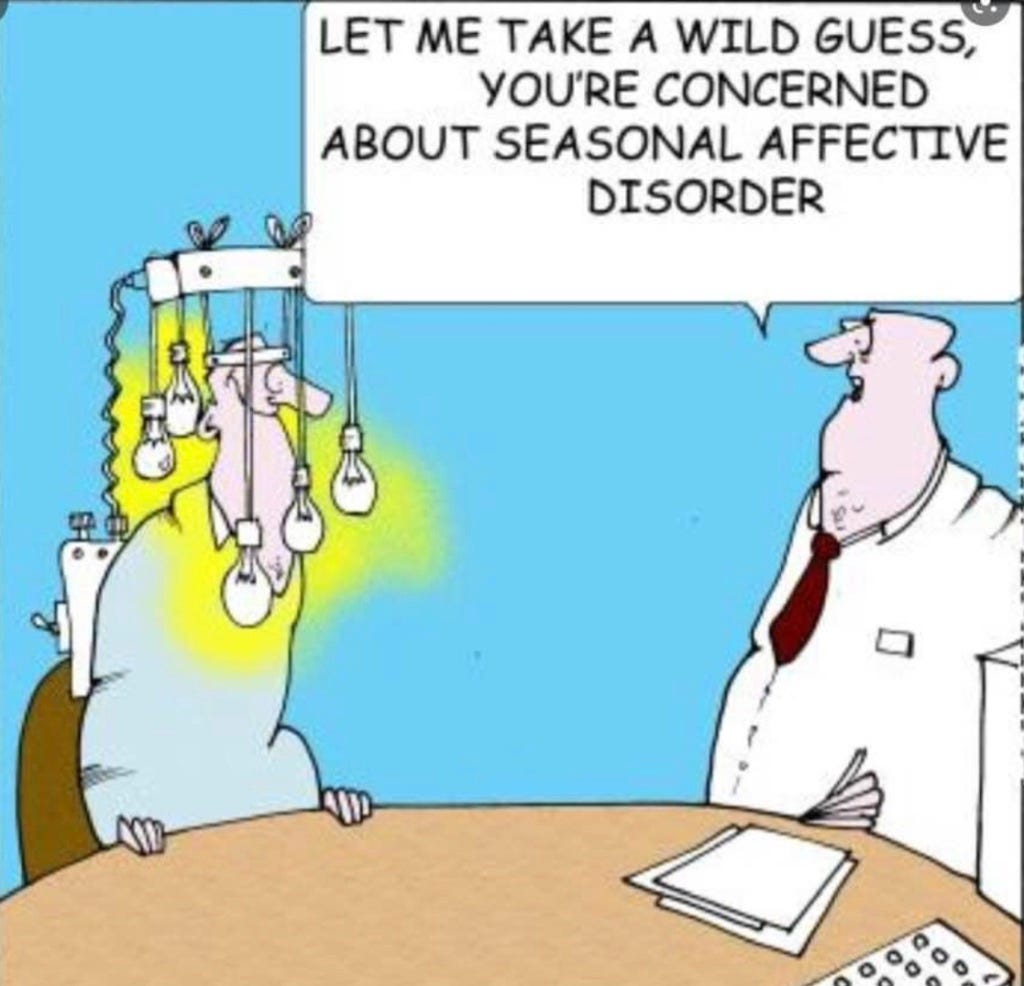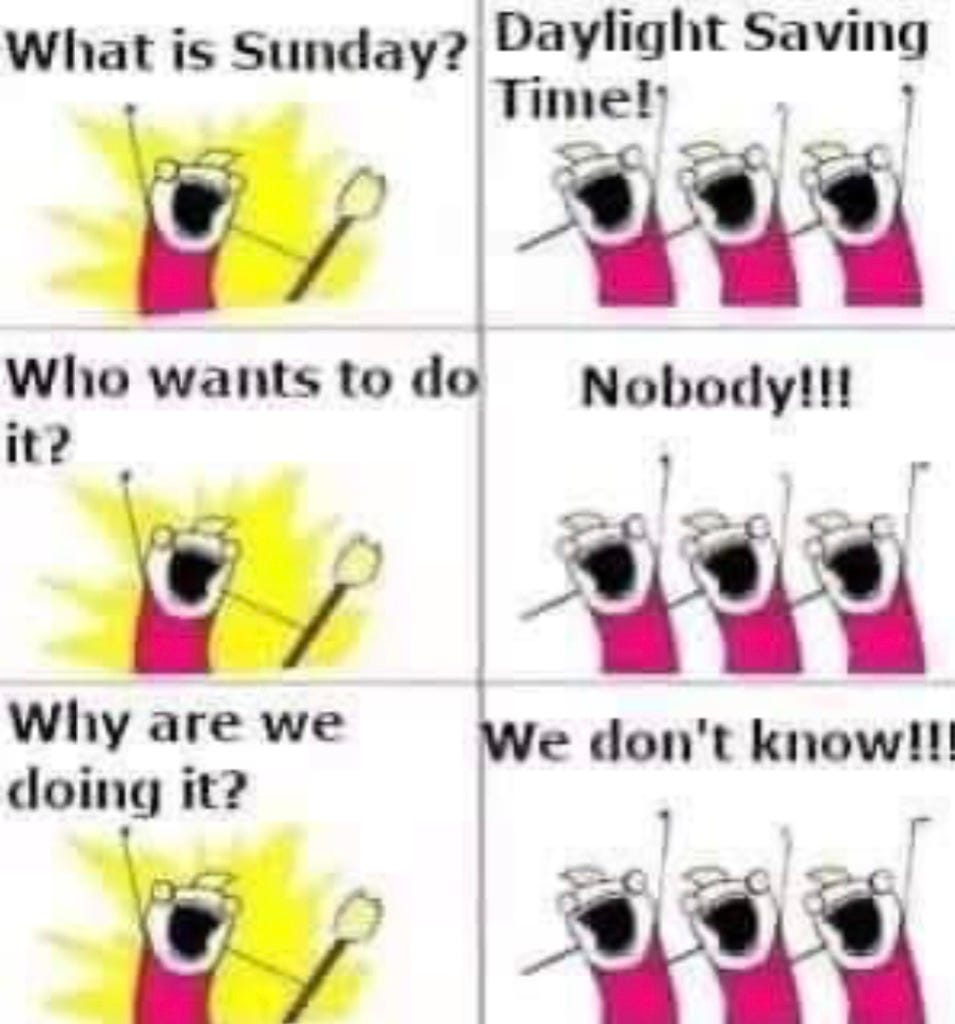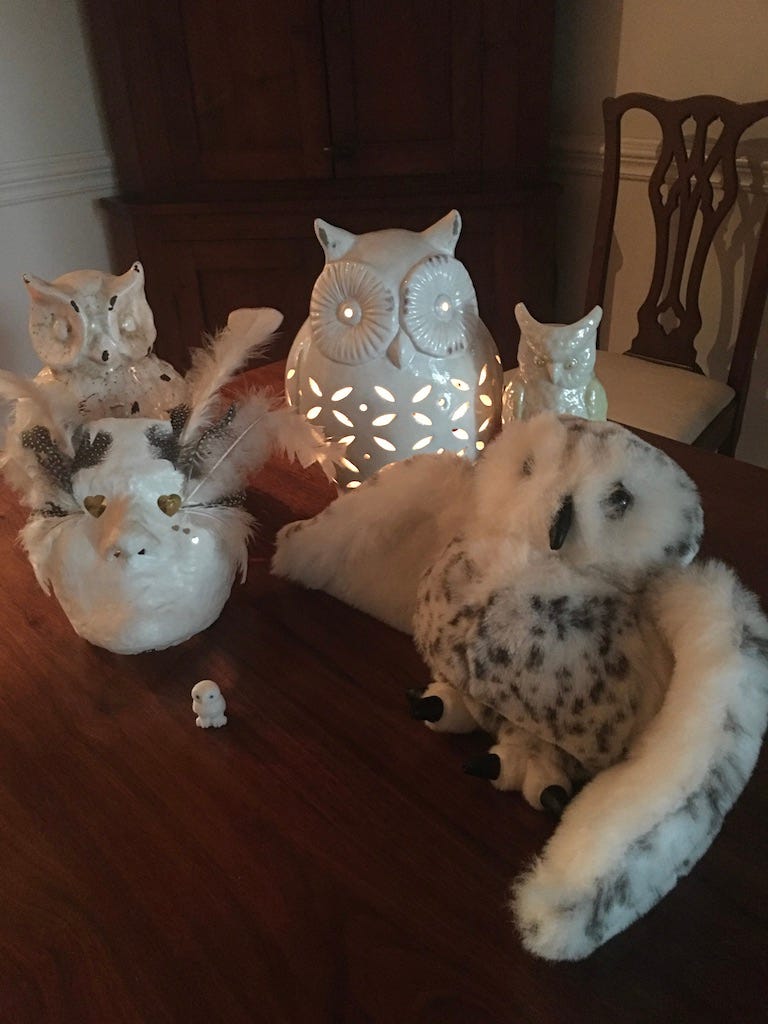Happy weekend, and welcome to your nocturnal edition of newShrink!

a preface at posting time
Perhaps surprising given the week’s emerging dominant themes, the “written in the midnight-hour” part of this News Notebook was my unanticipated — quite grouchy — adjustment to Internet outage Thursday evening at prime writing time with an unusually packed Friday schedule ahead. Revived Internet service by morning didn’t much improve my snit, since I had no time to use it for many hours anyway. (Increasingly frequent outages after 26 years in an area with no such problems aren’t a great mood-boost.)
Had nearly made it to first coffee when in my head Neil Diamond began singing what may be my least-favorite of his repertoire: “Thank the lord for the nighttime, to forget the day…”
It was so laugh-aloud silly it somehow also jolted me to realize I had been overlooking, leaving-out and forgetting to consider or mention a big piece of this week’s dominant darkness themes that include clinical depression as well as the depth-psychology traditions’ fertile but painful dark nights of the soul. That missing piece is my lifelong love-affair with night. Dreamtime or waking, it has always been my creatively rich, privately nourishing and healing time and space.
And that is in dynamic tension with all the ways, especially in wiser adulthood, that I have and model in practice a lot of very healthy regular habits, including sleep hygiene, exercise and sunlight.
But I’m willing to bet, have long been told, I was even an owlet baby!
So perhaps the power outage, overnight delay and even that pesky Neal Diamond song are in the service of greater authenticity and credibility here. This one is written in the midnight-hour. (And posted near midday; even with a “dark-night” theme, there’s no way I’m publishing anything without some decent sleep and a daylight proof-read!)
court… and dark
This week’s Notebook was originally to be a bit of a patchwork I hoped would stitch together as a coherent quilt. I had planned a news catch-up edition, pulling up threads for comment and further thought from the many and varied items and issues both this week and recently.
I’ve since remembered how I am not much for quilting. And this one may need to be more like the lovingly mended, literally hole-y, comforter nearly four decades old that I share in writing space with a pair of aromatic Labradors!
By writing-time midweek, two very different stories/themes tapping very different sides of me came to dominate attention, energy and newShrink time:
First, pretty much transfixing the old newspaper reporter in me, is the complex murder trial of teen Kyle Rittenhouse in Kenosha, WI. He faces six charges in two fatal shootings and one injury of Black Lives Matter protestors.
And second, pegged to some timely news pieces, are psychological and soul dimensions of this week’s mundane, but deep and multi-dimensional, annual “fall-back” that ended daylight saving time until March 13.
🦋💙
Here’s an overview and excerpt from The New York Times about the Rittenhouse trial. You can browse networks and YouTube for TV coverage that aired live.
‘I Defended Myself,’ Kyle Rittenhouse Tells Jurors in His Homicide Trial
Mr. Rittenhouse testified for hours about the deaths of two men and the shooting of another amid protests in Kenosha, WI. The judge and prosecutor sparred bitterly over judicial procedure.
“August 2020 in Kenosha erupted in protests, rioting and arson after the shooting of a Black man, Jacob Blake, by a white police officer, Rusten Sheskey. On the third night of the unrest, Rittenhouse, then 17 and living 20 miles away across state lines in Antioch, IL, brought his Smith & Wesson M&P 15 semiautomatic rifle with friends to join other armed civilians to come downtown amid the protests, saying they wanted to help protect property.”
Live TV courtroom coverage on Wednesday was riveting — often jaw-dropping — with the defendant’s day on the witness stand and the dramatic judge’s angry hammering of the lead prosecutor. Many of my thoughts and comments on this case are sure to be open questions and versions of “WHAAT?”, “educate me on this?” and “please talk me down from this ledge.”
Given this week’s delayed post, and with closing arguments to come Monday and either jury-verdict or judgment likely soon after, I’ve decided to save my full overview, quotes, comments and questions about the case for a single shrink-wrap — either stand-alone or within the Notebook — soon after the trial’s end. I’d love to hear any thoughts or comments you have on this one, before and after that.
🦋💙
Now, about all of this dark-time…
tiptoeing in
Thanks to reader and former newspaper-colleague Ann Ahern Allen for the light comic-relief route into dark topic via cartoons that she deftly collects and shares. Ann’s late husband Ken Allen — talented journalist, colorful wit and lovely human who left this world less bright and too soon — was my original source for last week’s quote about eating a bullfrog. I’m especially glad to honor him in the 11.12 post; that happens to be his birthday.
This cultural ritual of ending daylight saving time tends to launch a prime “shrink-season,” with mood-depressing sunlight-deficiency S.A.D. (seasonal affective disorder) intensifying depression risks and concerns on the clinical side. (Even though I’m not currently seeing or actively seeking new patients, just this week I have had about a dozen new-patient inquiries — plus one repeatedly insistent recruitment effort to lure full-time all-virtual psychotherapists via hefty hiring bonuses and lucrative pay.)
And for the soul/depth end of my psychology field, darkness is both the realm of deeply painful self-reckoning and yet also the rather natural habitat, creatively fertile space of germination or gestation of our deeper or soul Self. My comments and thoughts here will address both.
Jokes aside, our physiological and emotional relationship with daylight — and the lack of it during S.A.D. months — is real. The resulting disruption of sleep-governing melatonin production in the brain can cause or aggravate a host of medical conditions, obesity and enormously prevalent depression.
As noted above, I am keenly aware of irony in my writing about this in a “dark nights”-themed post at an unusually late nocturnal hour. It is NOT a healthy habit and I don’t do it all the time. Ie,” do not try this every night at home!”
“A Howling Tempest in the Brain”
This image is how the late novelist William Styron describes his own bout with debilitating depression in Darkness Visible: A Memoir of Madness. Styron was the award-winning author of the novels Sophie’s Choice and Confessions of Nat Turner (both of which stirred various controversies that have been revisited and studied in interesting pieces, some included in links at the bottom of this post.)
This excerpt from a review of Darkness Visible by Victoria Glendenning in The New York Times makes an important (and commonly ignored) connection and correlation between overuse and dependency on alcohol — like opioids and marijuana a depressant, despite the pleasant felt-experience it evokes — and depression.
He had been abusing (his word, not mine) alcohol for 40 years, and had recently given it up - or, rather, it had given him up; it made him sick. ''I date the onset of my depressive mood from the beginning of this deprivation.'' He did not write under the influence of alcohol, but ''I did use it - often in conjunction with music - as a means to let my brain conceive visions that the unaltered, sober brain has no access to.''
Similar correlations of depression with obesity, insomnia and limitation/resistance to mobility — along with side effects of antidepressant medications including weight gain and impairment of healthy dream-quality sleep — can make treatment and healing of depression extremely complex and intractable. This is true particularly after a long period of time with the disorder.
Previous newShrink editions have highlighted sobering statistics on both enormous percentages and rapid growth among adult Americans in mental health diagnoses — particularly depression — and use of one or more psychotropic medications to treat them. World-wide the numbers and patterns are even worse, as a CBS news piece this week cited:
300 million people worldwide suffer from depression
at least half of their depressions have not responded adequately to antidepressant medications
in developing countries, 75 percent of those suffering from depression receive no treatment
almost a million of them take their own lives each year
among American adults, depression tripled during the \ COVID pandemic
Now there’s some welcome hope.
A timely CBS News story this week presents a promising new treatment from Stanford called SAINT with potential as a depression game-changer, now performing so well in clinical trials that it has FDA “breakthrough” status bringing it closer to approval. The American Journal of Psychiatry just published SAINT’s remarkable study results of 79% improvement or complete relief of depression symptoms with the non-invasive brain stimulation. Two larger NIH studies are now underway, one focused on treatment of high-risk suicidally depressed patients in closely monitored hospitals and in the particularly vulnerable weeks soon after release.
SAINT, which stands for Stanford Accelerated Intelligent Neuromodulation Therapy, is an experimental treatment using a directly aimed version of targeted magnetic stimulation (TMS). Patients describe the electronic-vibration process only as tiring afterward, not physically painful.
In the report one middle aged woman with an acute episode of alarming suicidal depression, part of her longtime bipolar disorder, experienced immediate and lasting relief of symptoms with her first SAINT treatment and cautionary hospitalization. She and her upbeat husband are interviewed in their home, talking about her vibrant life after the single treatment that’s included a return to college for a long-missed degree.
An 83-year-old patient getting relief over three years in one of the clinical trials is a therapist specializing in depression who has suffered from debilitating depression for over 60 years, without relief from “more meds than there are fingers to count.” She says:
“You feel as if there is just no light in your life. Most people with a history of depression, particularly serious depression, feel a sense of shame… This is something very deep inside. A heaviness in your body. You're in a tunnel and there's no way out."
Dr. Nolan Williams, director of the Stanford laboratory and the research project, counters with:
"This intervention is something that has shown them that it's really their brain. It's not something about, you know, them personally, that deep self. But it's really a brain disease that we can identify and really treat and move."
Feeling steadily better after her long course of the treatments, joined all along the way by her husband, she tearfully says, “I hope the younger me is out there watching this.” Her one-word response to the enormous prospects of SAINT: “Hope.”
Some of my thoughts and observations from both clinical and depth psychological perspectives:
I appreciate the way the center’s Dr. Williams makes a distinction between disordered mood with its resulting behaviors, roles and reactive feelings and the deeper, authentic (soul-)Self. However, I also note that over the long term, both the role of being the depressed person and the strategies and adaptations made to treat and live with it become part of the person’s self-identity and personas. That’s the “lower-case-s” or “resume” self they present in the world, in their relationships, and in how they view themselves.
For the chronically or severely depressed person exploration or connection with the deeper, soul-Self can often be beyond reach, obscured by the depression, avoided as potentially painful or too exhausting.
This can make it particularly difficult, even frightening, for both the depressed person and partners or those in their supportive family system, to make, attempt, or even consider changes — even those that can bring relief and healing. Living with this can be profoundly lonely, for all.
In watching the CBS piece I thought of this particularly as I was so moved by the enormously — in one example of a much older couple in a very long marriage, rather heartbreakingly — supportive spouses of the interviewed depressed patients receiving SAINT treatment.
For all of those statistical depression cases and case-increases, there are multitudes more spouses, children and loved ones living in constant — and largely invisible — relationship with the depression as well.
As I have learned with people I care about both in and outside the psychotherapy room, it’s surprisingly common, and largely invisible, that even quite high-functioning and healthy adults grew up from young childhood feeling or actively made responsible for keeping a suicidally depressed parent alive.
It seems the SAINT targeting may activate the portions of the brain that enable us to intentionally choose to do things that don’t initially feel good in order to heal a disorder or get healthier. This is encouraging, because for people trying just not to feel bad — and their families trying to help them — choosing to do things that initially don’t feel good in order to get healthier is particularly difficult and counter-intuitive.
Also very moving to me were the older therapist-patient’s comments about shame and how it becomes integrally part of the depressed person’s experience. This reminded me of last week’s focus on sexuality with the Elizabeth Banks interview and now-divorced Huma Abedin and disgraced ex-Congressman Anthony Weiner.
Themes that come up for me — with both the depression cases and the sexuality ones — are the ways that secrecy (as distinct and different from privacy) is both evoked by and further fuels/ignites shame. This makes the simple “naming and de-shaming/name-to-deshame” mantra of Banks’ “sex-ed-starting-with-adults” podcast a powerful psychological move.
Making a habit of kindly calling patterns and behaviors (and body or brain parts) by their names can be liberating and essential — for example, when dealing with a person apparently acting-out against and in response to shame (like Anthony Weiner.)
The same is true with a depressed person. But with a person profoundly vulnerable and feeling shame about depression already, the perceived risk of adding to that shamed helplessness can make it inordinately difficult, even for doctors and other professionals, to name or suggest even very positive actions, lifestyle steps, or changes.
🦋💙
On the soul and depth psychology end of the spectrum, our human experiences of time and interplays between darkness and light hold profound significance often described in such terms as the “dark-night of the soul” or “night-sea-journey.”
In the depth psychology traditions, these images are common metaphors for the core process of individuation that can be guided/assisted in depth psychotherapy.
Individuation is where we adults begin to recognize, engage with and “allow-in” areas of ourselves that were previously unknown, unclaimed or denied — unconscious “shadow” parts of our selves and lives.
In this way we address that profound loneliness, becoming more whole by reconnecting with more and more of the original soul-Self we were born to be.
On a lighter note, here is where I confess my weird thing — I seem to be the only person on the planet (or in the nation) who actually likes and prefers we keep daylight saving time.
Most people seem to view it more like this:
I do find the cartoon hilariously accurate, by the way.
And my preference for the twice-a-year time changes is despite what for me is a visceral “dark descent” from Halloween until the December 21 winter Solstice. (By about the 27th I physically crave and can see and feel the shifting back toward longer days and more daylight.)
Albeit its being a bittersweet, love-hate relationship with both of the seasonal time-change manipulations, something in me seeks and soaks-in the ritual rhythms of the cyclical changes.. like tides… life-death-rebirth in plants… the human initiation rituals of cultures that live closest to nature.
And one more, possibly even sillier, song lyric ear-worm. The week’s time-themed one arrived at early dawn along with the time-change, courtesy of the Righteous Brothers: “…time goes by so slowly, and time can do so much…”
Then comic echo of this came during a lively group song-request musician’s gathering I attended with my mom at her assisted-living. A 90-ish resident veered off the prior playlist of very early 20th Century oldies and the occasional hymn when she requested — then loudly belted-out — the entire 1965 hit song! (It’s Unchained Melody, in case you were wondering…)
🦋💙
Reflecting on this darkness-vs-light/day-vs-night theme, I realize I have come to appreciate and cherish both owl and lark ends of the day.
But for me it’s the owl-time — and season — that holds the magic.
And from the standpoint of soul, it seems important to know where our magic is.
I’ll leave you with some favorite images of a snowy-white owl-figure I call Grace, who first appeared in a recurring-dream at least two decades ago — in an unlikely corporate setting. (She preceded the Harry Potter books, and when I first encountered Hedwig there I had to have this wonderfully cuddly stuffed puppet. Today Granddaughter Miz E is allowed to play lovingly and sleep with her… after washing her hands.)
And, that is all I have! Talk to you next week… maybe at a “decent” hour.
🦋💙tish
… it is important that awake people be awake,
or a breaking line may discourage them back to sleep;
the signals we give — yes or no, or maybe —
should be clear: the darkness around us is deep.
— William Stafford, “A Ritual to Read to Each Other”
https://www.nytimes.com/2021/11/10/us/kyle-rittenhouse-testimony.html?smid=em-share









